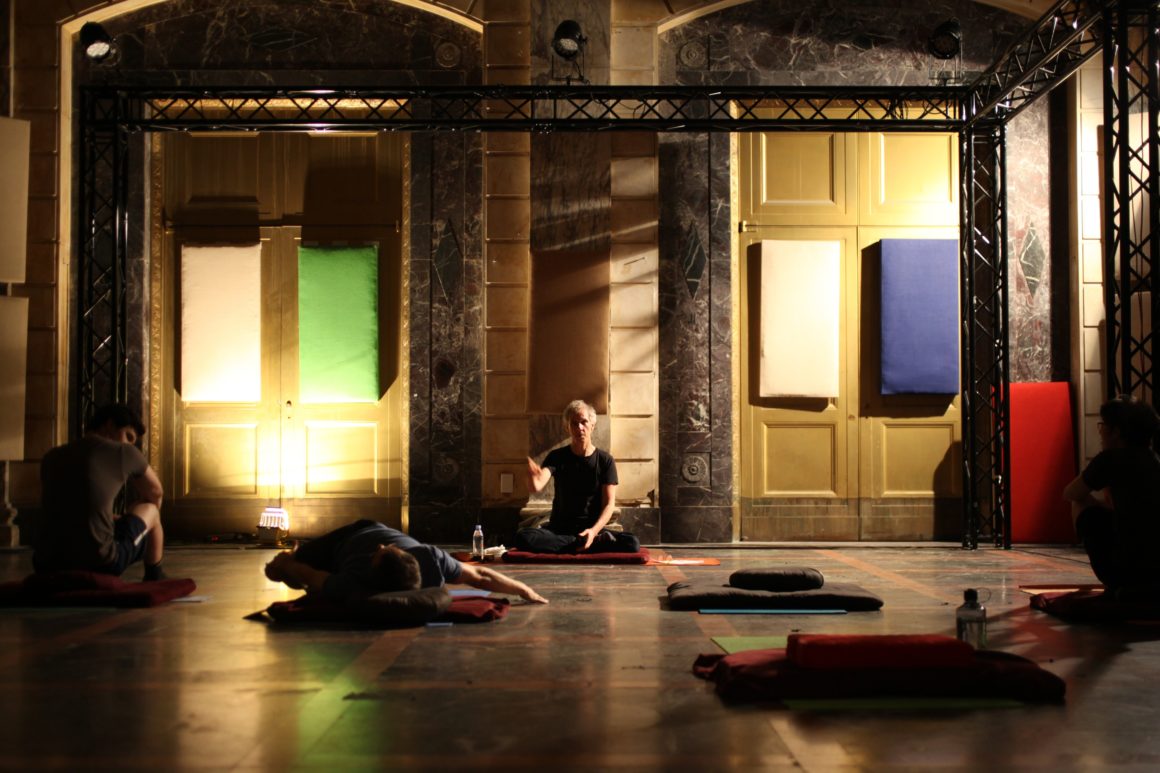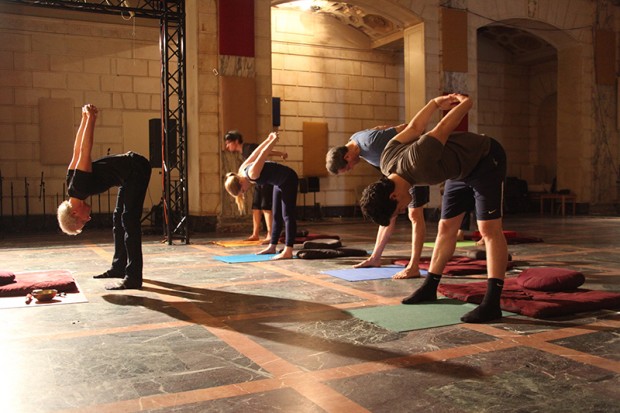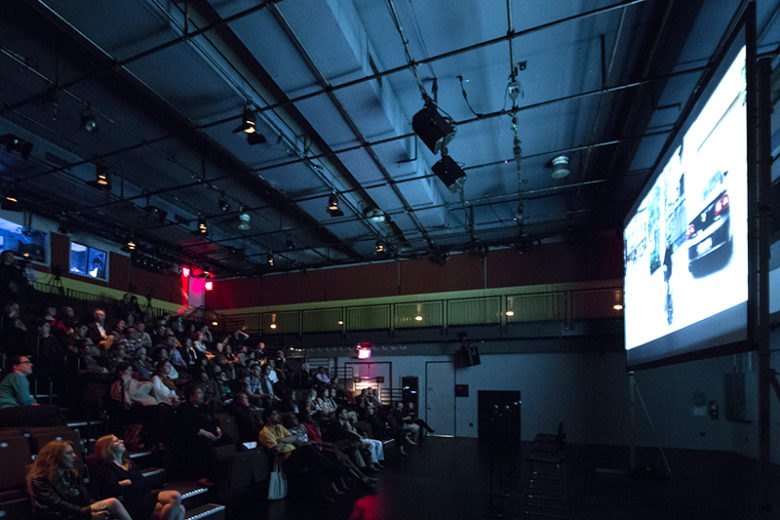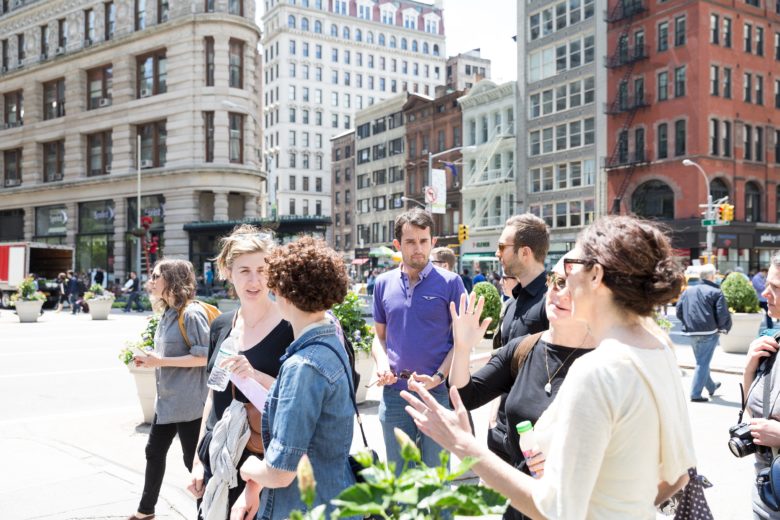
“The dean at my architecture school, John Hejduk, always talked to us about how important the tools were for our work,” relays Richard Allon to an intimate group that sits across from him, mirroring his cross-legged pose—all of us on yoga mats in the vault-like space at Brooklyn’s ISSUE Project Room. The atmosphere in here on this Sunday afternoon is dark, cool, and contemplative, apt for this meditative “well-being workshop” that Allon, both principal of an eponymous architecture practice as well as a yoga and meditation instructor, begins to guide us through.

First, though, he makes the connection between a conscious architectural practice and a conscious life, citing Hejduk: “He taught us that the medium you choose clearly affects the architecture you make.” Like pens or drafting software, the tools we are honing today—our minds and bodies—likewise influence the lives we build with them. Allon leads us through a quiet hour of what he calls “embodied architecture,” introducing three techniques: meditative awareness, yoga, and a practice of looking-without-defining. The workshop is part of Van Alen Institute’s Elsewhere spring event series, which promotes new insights on urban well-being through unexpected experiences for the mind and body.
We begin with inner bodily awareness, closing our eyes and thinking of each part of our bodies, head to toe. Then we spend some time placing our attention on the quality of our breath before opening our eyes.
“Keep a soft gaze; just let the world come to you,” Allon encourages as we begin to work on our awareness of the room. “See if it’s possible to look without grasping.” He leads us into a spatial exercise, what he calls the Human Camera: We begin with our eyes closed, open them to look at something, and close our eyes again just as we start to name the thing. We do this several times, taking undefined mental snapshots in the lofty room.
To complete the session, we move back to bodily awareness, and Allon guides us through a light yoga routine. “Be aware of your body; be aware of the space; follow your gaze; be a camera,” he instructs. We notice the simultaneous pain and relief of our stretching muscles as we move into unfamiliar poses.
After yoga, we end with another round of Human Camera, which has by far been the most unexpected, and most challenging, aspect of the workshop for me. Though I spend a good deal of my day-to-day time considering built spaces, this exercise flips my normal approach on its head: by only absorbing visual snapshots, I am learning how to see without judgment. This underlined “embodied architecture” for me: rather than push me to be more mentally or intellectually aware of the places I inhabit, I began to see how I might be able to maintain (or restore!) a harmony between my physical self and my physical world: feeling fully present in both myself and my place. That is, I could know and be at home with myself—even as I know and am at home in a metropolis that is home to so many others.


